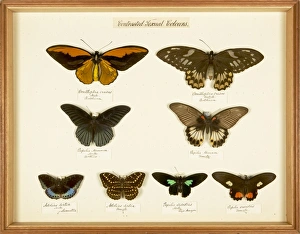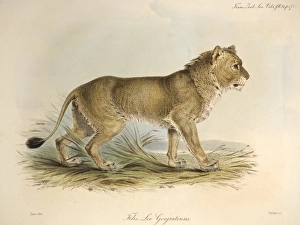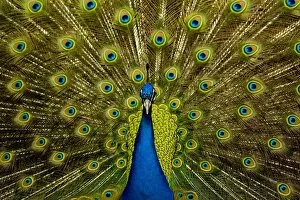Sexual Selection Collection
"Unveiling Nature's Seductive Symphony: The Fascinating World of Sexual Selection" In the animal kingdom, allure takes on extraordinary forms
All Professionally Made to Order for Quick Shipping
"Unveiling Nature's Seductive Symphony: The Fascinating World of Sexual Selection" In the animal kingdom, allure takes on extraordinary forms. From the resplendent peacock with its mesmerizing feathered tail train to the peculiar proboscis monkey flaunting its elongated nose, sexual selection weaves a captivating tale of evolutionary beauty. A snapshot frozen in time reveals a male Argus Pheasant at London Zoo in 1926, proudly displaying his magnificent wing and tail feathers before an intrigued female. This monochromatic image transports us back to an era where courtship rituals were observed with awe and wonder. Delicate entomological specimens from the Wallace Collection remind us that even insects partake in this intricate dance. Their vibrant colors and elaborate patterns serve as nature's love letters written on fragile wings. The enchanting proboscis monkey captures our attention once again, reminding us that attraction can be found within uniqueness. Its distinctive feature acts as a symbol of individuality amidst a sea of ordinary faces. An ethereal Argus Pheasant feather delicately juxtaposed against Darwin's timeless illustration evokes thoughts about how these remarkable displays have evolved over time, and is through such adaptations that species continue to captivate mates and ensure their genetic legacy lives on. Traveling further back in history, four British Paleolithic handaxes whisper tales of early human fascination with aesthetics. These ancient tools hint at our ancestors' appreciation for beauty long before art became defined by brushstrokes or chisel marks. Finally, we return full circle to the majestic peacock—Pavo cristatus—its iridescent plumage unfurled like a grand fanfare announcing its presence. With each display of its tail feathers, it tells a story older than time itself—a story woven into the fabric of life itself—the story of sexual selection. In this symphony orchestrated by Mother Nature herself, creatures great and small engage in a dance of attraction.








